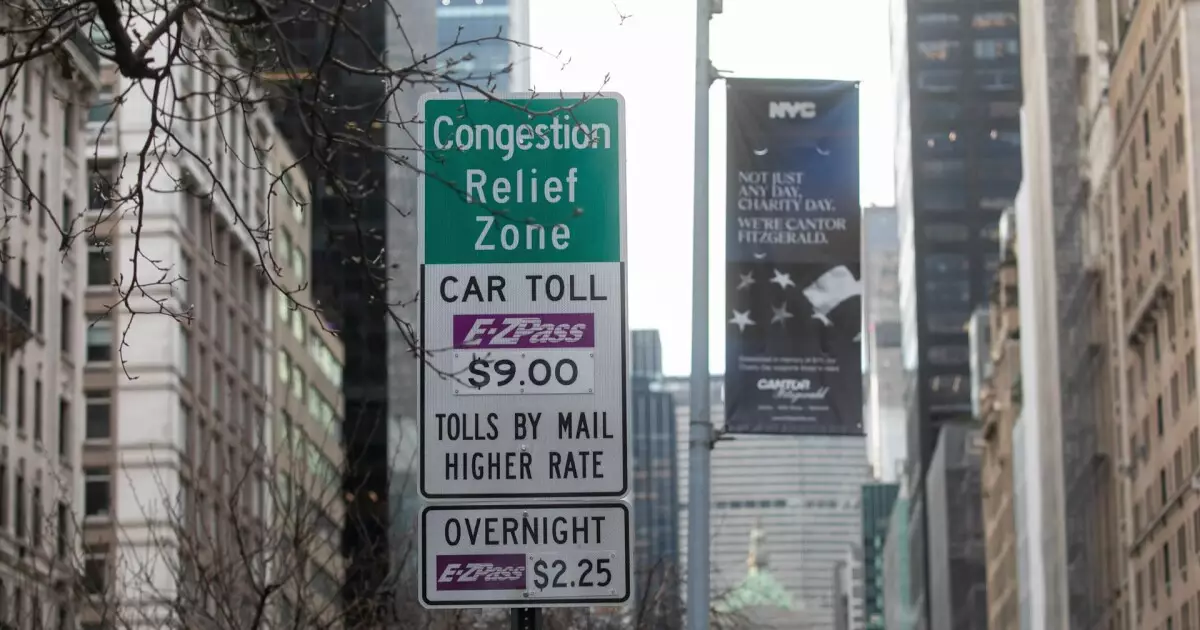New York City has long grappled with the challenge of traffic congestion. With a dense population and a bustling economy, the metropolis has seen worsening gridlock over the years, prompting various administrations to seek innovative solutions. Among these was the congestion pricing program, a brainchild initially envisioned by former Mayor Michael Bloomberg in 2007. The program was strategically designed to alleviate congestion by charging a toll for vehicles entering Manhattan’s most congested areas, particularly south of 60th Street. The hope was that by introducing a $9 toll for most drivers, the initiative would not only generate revenue for public transit but also incentivize public transportation use.
However, the road to implementation has been anything but smooth. The proposal was met with legal obstacles and public pushback, culminating in a series of political maneuverings. After a temporary halt initiated by New York Governor Kathy Hochul over cost concerns, the plan reemerged in November, 2022, spearheaded by the Metropolitan Transportation Authority (MTA). Recognizing the urgency of launching the program before the shift in federal leadership, the MTA worked to ensure that this crucial initiative rolled out, despite the various challenges faced.
In a striking turn of events, the Trump administration intervened decisively against New York City’s congestion pricing program shortly after its launch. Federal approval was rescinded, prompting a swift reaction from the MTA, which promptly sought legal intervention to preserve the program. Transportation Secretary Sean Duffy, aligning with President Trump’s critical stance, suggested that the program effectively penalized working-class Americans and small business owners. Duffy argued that individuals using the city’s highways had already contributed significantly to their maintenance through gas taxes and other levies. This sentiment underscored a backlash against what some perceived as an additional financial burden on everyday commuters.
The administration’s stance raised pivotal questions regarding the fiscal logic behind the tolls: rather than successfully addressing the congestion problem, critics argued, the initiative merely sought to fund transit operations without sufficiently offering toll-free alternatives. The federal Department of Transportation’s decision was justified by the agency’s belief that tolls should primarily focus on reducing congestion, not generating transit revenue.
In the wake of this federal action, New York officials expressed robust opposition. MTA Chair and CEO Janno Lieber championed the program, describing it as “highly successful” in curbing congestion and improving travel times. The degree of resistance from city leaders highlighted a broader disagreement on the role of such programs in urban planning and responsibility.
Amidst the backdrop of escalating tensions, the dynamics of governance within New York and at the federal level were laid bare. The contrasting perspectives magnified the urban-rural divide, with city officials advocating for necessary measures to modernize and improve urban infrastructure, while federal officials framed these measures as unfair to working-class drivers. This ideological rift underscored deeper issues: economic disparity, urban development, and responsible fiscal policies.
The fallout from the congestion pricing revocation extends beyond immediate transportation concerns. Should the MTA’s lawsuit succeed, it could set a precedent affecting municipal transportation funding models across the U.S. The $15 billion in projected revenue aimed at supporting the MTA’s capital projects could be jeopardized, potentially stalling vital improvements to New York City’s aging transit system. Moreover, the legal battles point towards a larger discourse about urban policy-making and the implications of federal overreach into local governance.
The controversy surrounding New York City’s congestion pricing program is emblematic of a significant clash between federal and municipal priorities. As the legal battle unfolds, stakeholders on both sides must navigate the complex intersections of transportation, economy, and governance in a city striving for progress amidst existing challenges. The ongoing dialogue will undoubtedly shape the future of urban transit in New York and potentially set its course for other major cities wrestling with similar issues.

